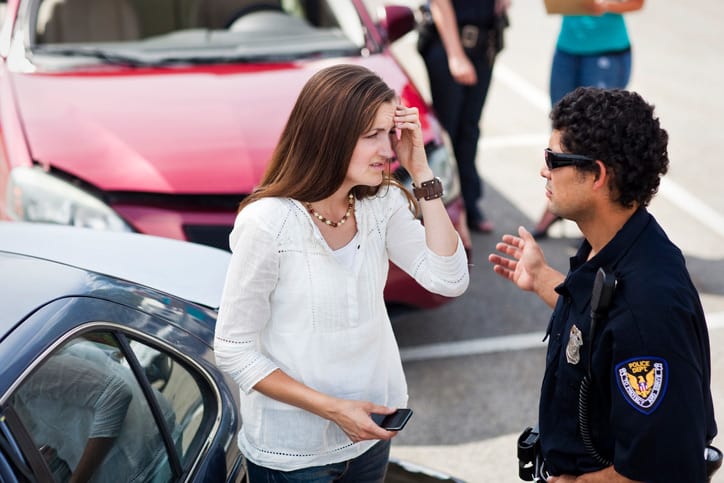Who Is at Fault for a Blind Spot Accident?
Determining fault in a blind spot accident is a complicated question. Many people assume that blind spot accidents are genuine accidents and that no one is to blame. Legally, that’s not the case. Who is at fault for a blind spot accident depends on who tried to change lanes with someone else in the way, even if they honestly didn’t know that the other vehicle was there. Our Colorado car accident attorneys explain what to know about determining fault after a blind spot crash.
Who Is Responsible for an Accident Resulting From a Blind Spot?
The driver who changes lanes without a clear path of travel is who is responsible for an accident resulting from a blind spot. A driver may only change lanes when they have enough room to do so safely. When they try to change lanes when someone is in their blind spot, they attempt to change lanes without enough open space to make the lane change. Therefore, it is the driver that enters the other lane without a clear path who is responsible for an accident resulting from a blind spot.
Colorado Law for Blind Spot Accidents
The Colorado law for blind spot accidents is Colorado Revised Statutes 42-4-1007(1)(a).[1] The law says that a driver must drive in one, singular lane as much as possible. It is a violation of Colorado law 42-4-1007 for a driver to change lanes without having a clear path to do so.
When a driver merges into another vehicle that is in their blind spot and causes an accident, it is because they have not complied with the law that requires them to verify the lane is clear before moving their vehicle.
Who Is at Fault in a Blind Spot Accident?
Who is at fault in a blind spot accident depends on who is responsible for violating a traffic law. Usually, it is the vehicle who attempts to change lanes without realizing the other car is there who is at fault for the blind spot collision.
Even though it might seem like no one is responsible for a blind spot accident, all drivers have the responsibility to ensure that they can safely execute lane-change maneuvers. Not seeing the driver isn’t an excuse for fault in an accident.
Is the Accident My Fault If I Was in Their Blind Spot?
No, an accident is not your fault if you were in the other driver’s blind spot. It’s up to the driver who changes lanes to make sure that no one is in their blind spot. They do so by checking in their mirrors and glancing over their shoulder. If you’re traveling in your lane, otherwise obeying traffic laws, it’s not your responsibility to know where someone else’s blind spot is. Instead, it’s their job to make sure that the road is open before they execute a lane change.
How Many Accidents Are Caused by Blind Spots?
According to the National Highway Traffic Safety Administration, 840,000 accidents are caused by blind spots each year in the United States. The collisions result in approximately 300 fatalities each year. The figure includes accidents involving commercial trucks as well as passenger vehicles.
Accident While Changing Lanes Who Is at Fault?
For an accident while changing lanes, who is at fault is the driver who changes lanes. A driver cannot escape liability for an accident by claiming that they didn’t see the person in the other lane. Instead, the driver who wants to change lanes must take whatever steps they need to take to ensure that they can change lanes safely. When an accident occurs while changing lanes, who is at fault is the driver who violates a traffic law by attempting an unsafe lane change.
Blind Spot Accidents and Colorado Law
Many people are surprised at the fact that a driver can be at fault for a blind spot accident. It might seem like a driver shouldn’t be held responsible for what they couldn’t see. However, a driver has the responsibility for all lane changes that they make. Through mirrors, glancing over the shoulder, and speed adjustments, the driver must do what it takes to ensure that there is no one in their blind spot before they execute the lane change.
When you’re involved in an accident where the other driver claims they couldn’t see you in their blind spot, it’s important to fight aggressively for your rights. It’s easy for the other driver to be untruthful or try to minimize their bad driving. They might falsely accuse you of wrongdoing. You may need to prepare witness testimony and work with accident reconstruction experts to prove the truth.
Comparative fault may be a question in a blind spot accident case. Speeding and distracted driving can come into play. However, remember that proximate causation is a requirement for fault in any accident. In other words, legal liability is based on negligent behavior that causes harm. You must investigate what actions by what party ultimately lead to the crash.
How Can an Attorney Help Me With a Blind Spot Car Accident?
As a victim of a blind spot accident, you may deserve compensation. You may also find yourself defending against allegations of wrongdoing. An attorney for car accidents can ensure that you assert your rights and protect your interests after a blind spot car crash.
They can ensure that you take the necessary steps to receive compensation that you deserve under the law. In addition, they can help you defend against allegations of negligence, including traffic tickets and claims of civil wrong.
Contact Our Experienced Car Accident Attorneys Today
Our lawyers for car accidents have represented thousands of clients and won millions of dollars in verdicts. With experience in blind spot car crashes, we can take action for you when you’re in an accident. When you work with us, you can expect complete legal representation aimed at resolving your case quickly and getting you top dollar for your case.
Don’t wait. Begin your fight for justice today. Call us today for a free consultation about your case.
Sources
1C.R.S. § 42-4-1007. https://advance.lexis.com/documentpage/?pdmfid=1000516&crid=706eadca-b6b2-4543-a519-a996200c27d8&config=014FJAAyNGJkY2Y4Zi1mNjgyLTRkN2YtYmE4OS03NTYzNzYzOTg0OGEKAFBvZENhdGFsb2d592qv2Kywlf8caKqYROP5&pddocfullpath=%2Fshared%2Fdocument%2Fstatutes-legislation%2Furn%3AcontentItem%3A5X45-0DN1-FFFC-B424-00008-00&pddocid=urn%3AcontentItem%3A5X45-0DN1-FFFC-B424-00008-00&pdcontentcomponentid=234176&pdteaserkey=sr0&pditab=allpods&ecomp=h567kkk&earg=sr0&prid=2a3fd22a-024e-4cd8-b834-e2500aa2dfbd. Retrieved 4 February 2020.






